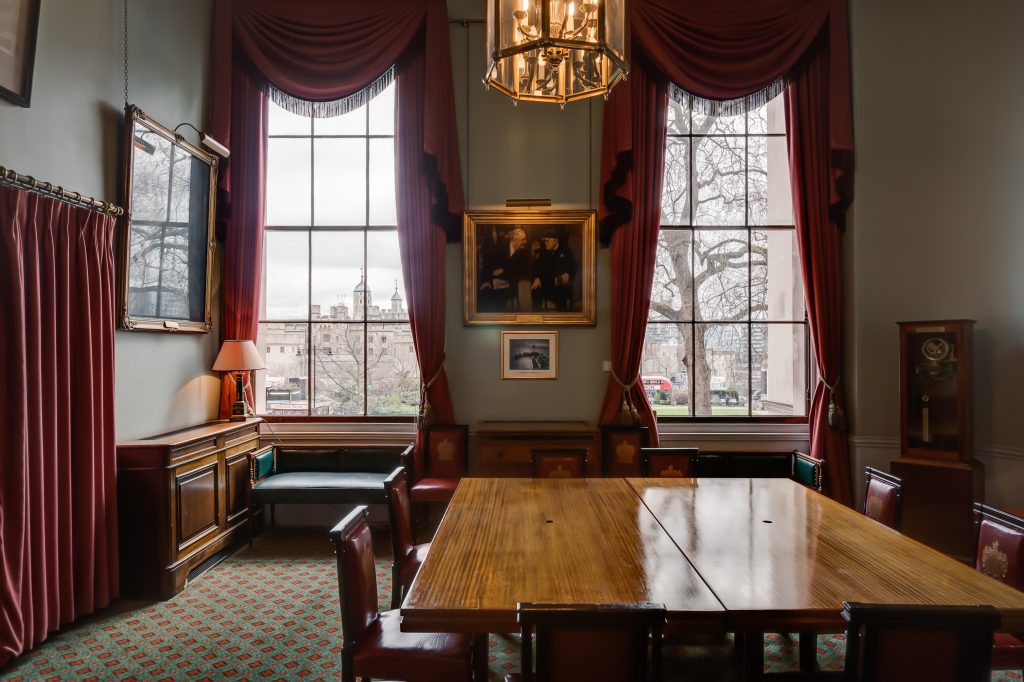
Tower Hill, London EC3N 4DH
Trinity House is a Grade I listed building located on Tower Hill with direct views of the Tower of London. It is home to the Corporation of Trinity House, the UK’s largest maritime charity wholly funded by its endowments, spending @£4m each year on its charitable activities including the welfare of mariners, education and training, and the promotion of safety at sea. It is also a Deep Sea Pilotage Authority. Today it serves the mariner as the General Lighthouse Authority (GLA) for England, Wales and the Channel Islands with responsibility for nearly 600 aids to navigation, from traditional aids such as lighthouses to the latest satellite navigation technology.
This chronicle began in 1514 when a young Henry VIII granted the charitable guild of mariners a Royal Charter to regulate the water traffic on the River Thames, their powers later extended by Elizabeth 1 to include the sea-markers around the English coastline.
Prior to its address on Tower Hill, the Fraternity (of Trinity House) was located in Deptford, Ratcliffe, and then Water Lane, this last location being destroyed in the Great Fire of London in 1666 and by fire again in 1715. The current building was constructed between 1794 – 1996 by Samuel Wyatt with Prime Minister, William Pitt the Younger, laying the foundation stone on 12th September, 1793. It was officially opened By King George III in 1796. In addition:
- The interiors of were gutted by an incendiary bomb which lodged in the stairwell of the building in 1940 during WWII – only the exterior remained intact. Just a few nights before, valuable paintings and artefacts had been removed from safekeeping in the Tower and were in transit at Trinity House prior to their relocation to a safe house in the country….thus most of these were destroyed.
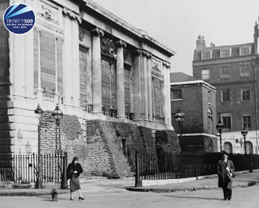



- The interiors of Trinity House were faithfully reproduced, largely from photographs in the 26th April, 1919 edition of Country Life, by Sir Albert E Richardson. At this time, a new Wing was added which today contains the Library, Reading, Luncheon and Pepys Rooms, and corporate offices. The building was re-opened by The Queen on Trafalgar Day, 21st October, 1953 – it was one of her earliest official duties in that capacity.


Country Life, 26th April, 1919 - The Court Room is distinguished by a deep cove in the ceiling painted with opulent central trompe l’oeil panels by J F Rigaud. These were restored in 1840 by a then little-known artist called William Holman Hunt (one of the famed ‘Pre-Raphaelite painters’) who referred to the project in his diary as….’fine fun’ – he was paid £30, which allowed him to ‘clear off my back accounts’. The ceiling was re-produced in 1953 by Glynn Jones on canvas panels and pasted to the ceiling.
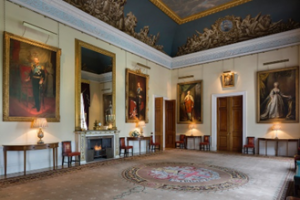

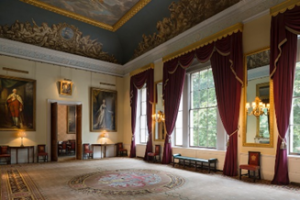
- The distinctive portrait of the bust of Queen Elizabeth I, which hangs over the doorway between the Court Room and the Luncheon Room, is original and ostensibly by (the circle of) medieval painter, George Gower. It is believed that the original was full-length but that one of the Dukes of Bedford, the original owners, decided it took up too much space and cut out just the head and shoulders, reducing and reframing it so it could be ‘put to better use’. Six full-length portraits, some by Gainsborough Dupont, are of George III, Queen Charlotte, William IV, Queen Adelaide, Edward VII and George V. Edward VII was an ‘Elder Brother’ for over 40 years. The carpet in the Court Room depicting the Arms of the Corporation – granted by Royal Charter of Queen Elizabeth I in 1573 – is the second largest single-loom carpet in the UK, the largest being at Windsor Castle. It took ten weavers four months to complete and, at 850lbs in weight, had to be lifted by crane through the central window to its first-floor location.
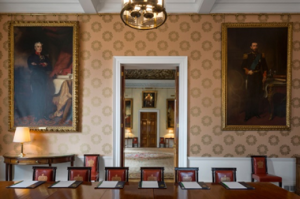
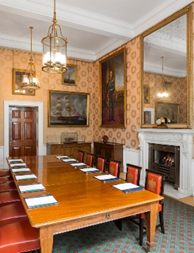
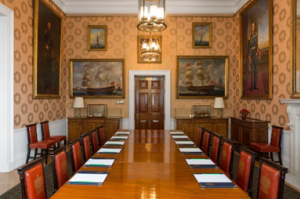
- The mirror in the adjoining Luncheon Room, hung with more full-length portraits of former Masters of Trinity House, is the only surviving one from the original house – the other being destroyed in a lorry crash in 1939 while en route to the Tower for war-time storage.

- The large painting in the Quarterdeck corridor of 22 ‘Elder Brethren’ by Gainsborough Dupont (1794) had a two-foot additional panel added to accommodate one extra Brother who was abroad at the time of the painting and ‘felt aggrieved’ to be left out. He is pictured wigless (unlike the others), for some reason never established.

- The brass bell from the Royal Yacht Britannia was presented to Trinity House when the Yacht was decommissioned in 1997 and is perfectly maintained and in working order in the ‘Quarterdeck’ corridors that lead to the main function rooms.

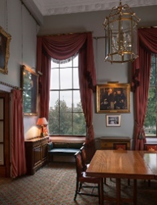
- The Reading Room, adjoining The Library, contains the famous painting of Churchill and Roosevelt in discussion at the 1941 Atlantic Conference on board HMS Prince of Wales by Raymond R Wilson. This pose of the two seated war-time leaders is replicated in bronze on a bench in London’s New Bond Street.
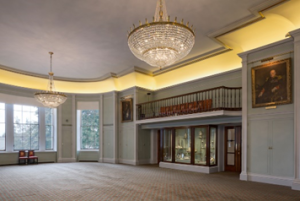
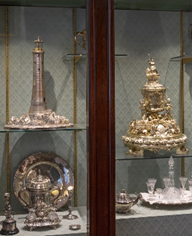
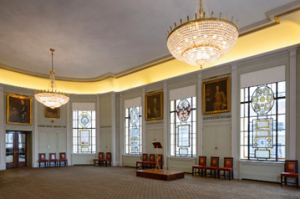
- It is not apparent on entering The Library why it is so-called but numerous maritime books are concealed behind doors forming part of the scheme of panelling. The room also contains a case displaying valuable dress silver, including an ornate silver gilt (wine cooler) centre piece, surmounted by a figure of Britannia, presented to Trinity House by William IV. On the opposite side of the room, panels of enamelled and stained glass depict the names and arms of former Masters and Wardens going back to the 1570’s and taken from the old hall at Deptford when it was demolished in 1788.Trinity House is available for private hire on an exclusive use basis and has been the venue for numerous memorable events from weddings to important corporate functions for over two decades, seating up to 130 in the Library (180 standing) and 60 in the Court Room (130 standing).In its 200-year history, the building has welcomed royalty, prime ministers and Lords of the Admiralty and is today managed by Deputy Master, Captain Ian McNaught. Reflecting the on-going patronage of the Crown, the current Master of the Company is HRH The Princess Royal, filling a role held in former centuries by, amongst others, the diarist Samuel Pepys, the Duke of Wellington and William Pitt.
To view a brief film of the House and its facilities, please visit: www.trinityhouse.co.uk/events-at-trinity-house-london Trinity House has been issued with Visit Britain’s ‘Good To Go’ Certificate of Assurance by Visit England, and the MIA’s (Meetings Industry Association) ‘Secure Accreditation’ Certificate. Additional Covid safety measures undertaken by the management includes an on-going schedule of commercial ‘fogging’.
Featured Photo from Trinity House, London


